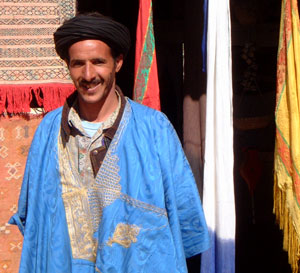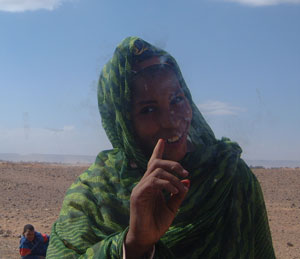|


      
|
Leo gives
a wonderful description of the valley and its people:
"People
live on the banks of the river, which so swells during the winter
that it resembles an ocean, and so dries during the summer that
it can be crossed on foot(...) Around the river there are many palmeries,
which produce a great many dates, of varying quality. Some can be
conserved for up to 7 years, provided they are jarred and stored
on the first floor.(...) The people eat a great many dates. They
also eat barley and a few other miserable foods. They only eat bread
at weddings or on other festive days." (Leo,
423)
|
 |
"The women are beautiful and plump; they are kind and some
are even quite liberal. These people have black slaves, both men
and women, who have children that they keep in the household. This
is why some people are black, others are mulatto and very few are
white". (Leo, 425)
|
 |
This mix
of races is typical of Morocco as a whole. Most Moroccans do not see
this variation in skin color as a sign of difference or specificity,
and within the same family colors can vary from the very light to the
very dark.
 A
friend of mine once told me that growing up in Morocco he did not have
the concept of white v. black, an idea he only acquired when attending
summer school in the U.S. Having spent a few months with a group of
black Americans who were conscious about their identity and heritage
he returned to Casablanca, only to notice that his school principal
was 'Black'- until then, the latter's skin color had been no different
than his height, width or eye color. One wonders at Leo's notion of
race: was it developed amongst Italians, or along his travels in Africa? A
friend of mine once told me that growing up in Morocco he did not have
the concept of white v. black, an idea he only acquired when attending
summer school in the U.S. Having spent a few months with a group of
black Americans who were conscious about their identity and heritage
he returned to Casablanca, only to notice that his school principal
was 'Black'- until then, the latter's skin color had been no different
than his height, width or eye color. One wonders at Leo's notion of
race: was it developed amongst Italians, or along his travels in Africa?
|